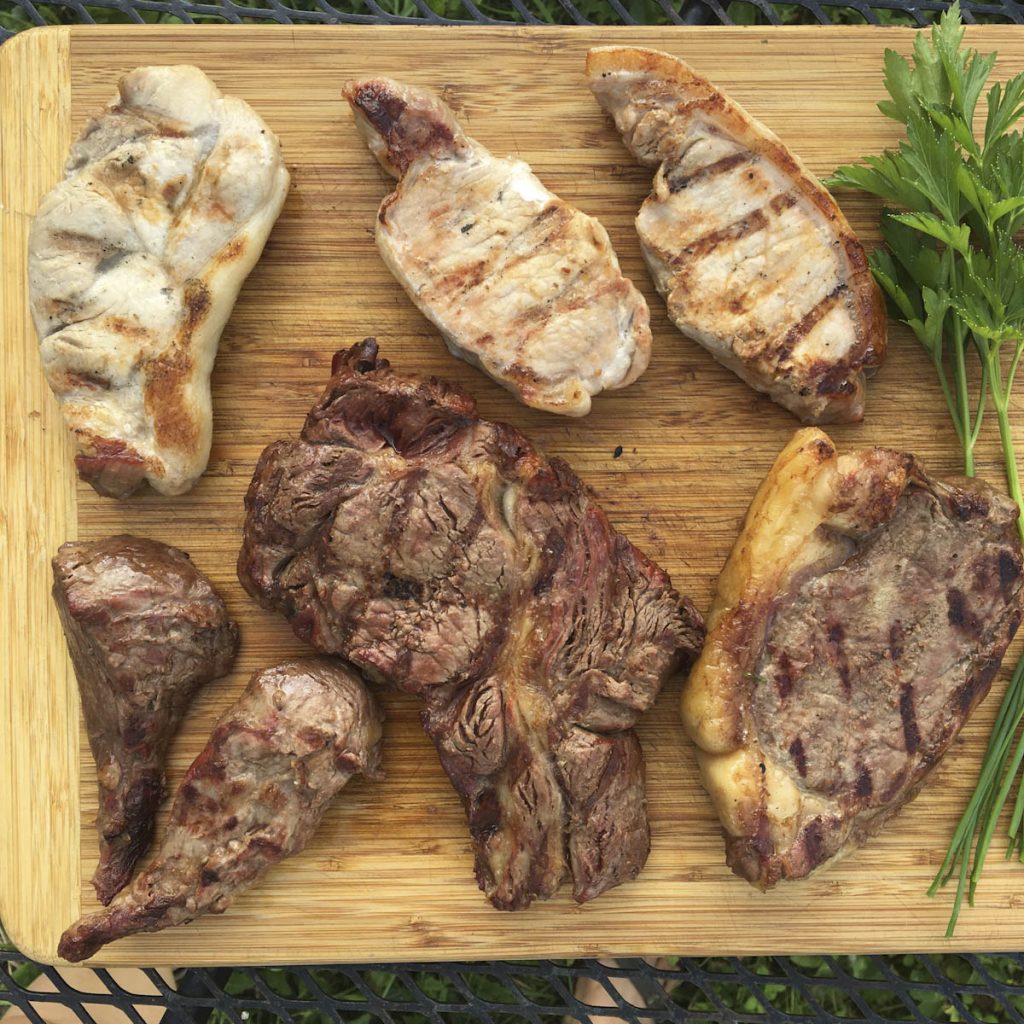The Basics of Grass Fed Steak
There’s an idea floating around that grass fed beef is fundamentally different from grain fed. And it’s true that well raised grass-fed beef does taste better and is more nutritious. But it is still beef, and there doesn’t need to be any mystery about how to cook it. Prime steaks like those from the loin - NY strips, ribeyes, filet, porterhouse, and t-bone - should be tender. Sirloin should be slightly firmer, but still have excellent eating quality. Tougher steaks like skirt, flank, flat iron and hanger should be cooked rare and sliced thin, but that is no different from conventional beef.
So the real question is how to cook beef, period. Just knowing beef is grass-fed doesn’t tell you enough. Is it incredibly lean grass fed beef from cattle raised in a tropical climate, or for, that matter, incredibly lean beef from a grain-fed dairy cow? How thick a steak is cut makes a huge difference to how quickly it cooks, as does the level of fat and the exact temperature of the grill or frying pan you’re using.
Get a Thermometer
Long time readers may see where this is going. Cooking with confidence, particularly when dealing with luxurious cuts like steak, requires either the lots of experience or the right tool. When a few degrees is the difference between medium rare and medium well a good kitchen thermometer is invaluable. It lets you know exactly what is going on inside whatever you’re cooking. It is a top three kitchen tool, right up there with a sharp knife and a good, heavy pan.
Now that you have a thermometer (this one is absolutely the best, every bit as good as thermometers that cost several times more) you are ready to cook your steak.
No matter how you are cooking a steak, your goal should be to have it as consistent as possible. That is, if you prefer rare you should try for a steak that is rare edge to edge. If you prefer medium this is what you should aim for. Only the outside should have a nice char or sear. Unfortunately, many common methods of cooking steak create a gradient, with a ribbon in the middle that is perfectly cooked, then a band of overdone meat on either side. This is an inevitable consequence of high heat cooking.
Low Heat, High Heat
One solution is to invest in a sous vide setup. By putting the steak (or anything else) into a precisely temperature controlled water bath, the entire thing can be brought to the target temperature over time. Then the outside is quickly seared prior to serving.
Those of us who don’t want to invest in another kitchen gadget can get a very similar effect by using an oven set to a low temperature, around 250. A steak placed on a rack is then allowed to slowly cook. When it is done, pull it to the counter and allow it to rest for a bit, then sear it for perhaps a minute on each side on a screaming hot grill or pan, though the latter will make some smoke. I must emphasize again how critical a thermometer is to this process. There are too many variables to go by time.
Because the main cooking in the oven is done at such a low temperature this is a very forgiving approach. You will really have to neglect it to overcook your steak when using this method. It works well for any steak, but it is particularly suited to thicker cuts, since these suffer the most from overcooking when they are exposed to high heat all the way through. It also works for pork chops or any lamb grilling cuts.
Thanks for reading, and please let me know in the comments if I can clarify anything!

